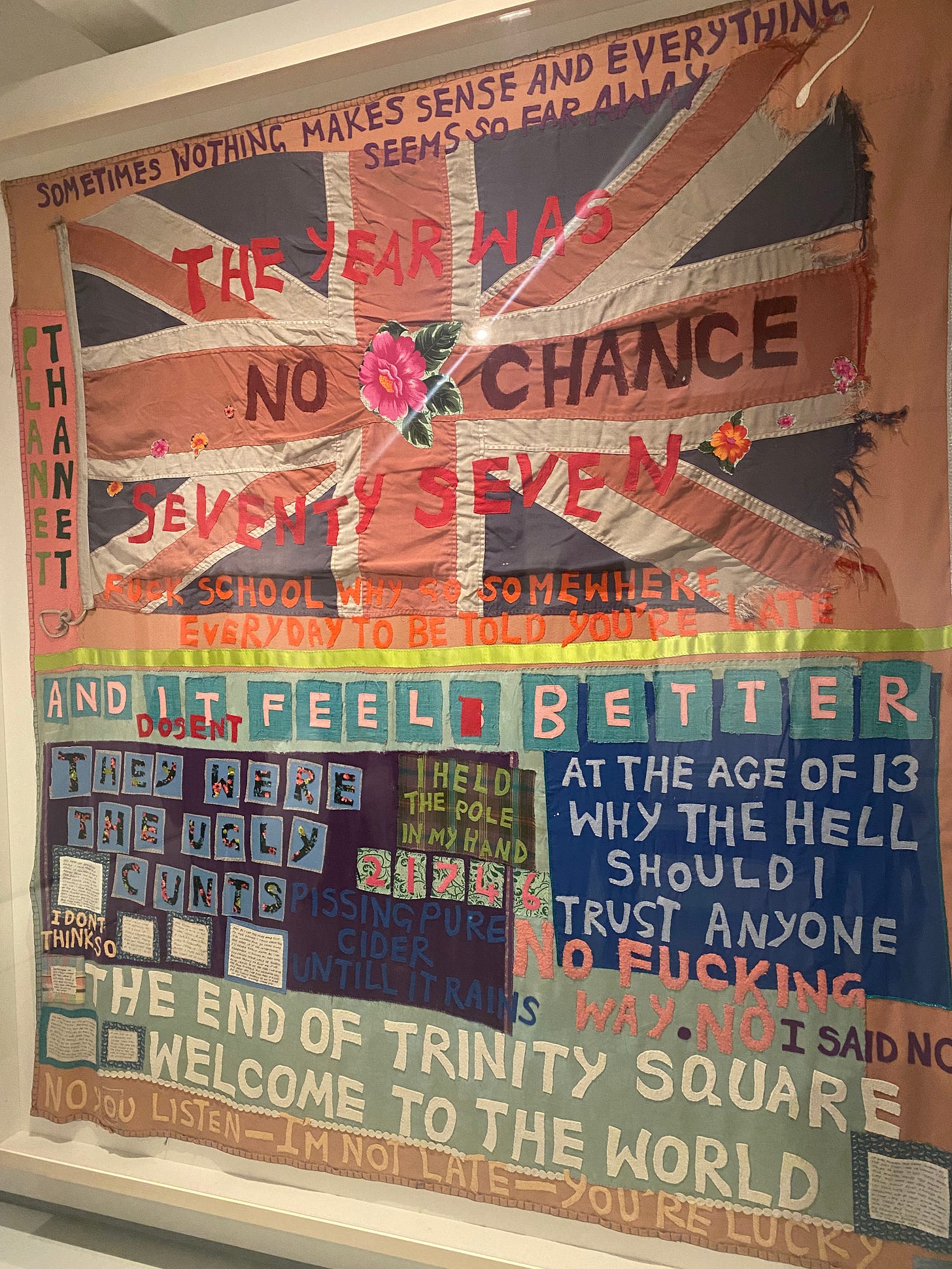Some great exhibitions I’ve seen recently, in no particular order
1. Soulscapes
First up I went to Dulwich Picture Gallery to see Soulscapes. Described as a ‘contemporary retelling of landscape by artists from the African Diaspora.’
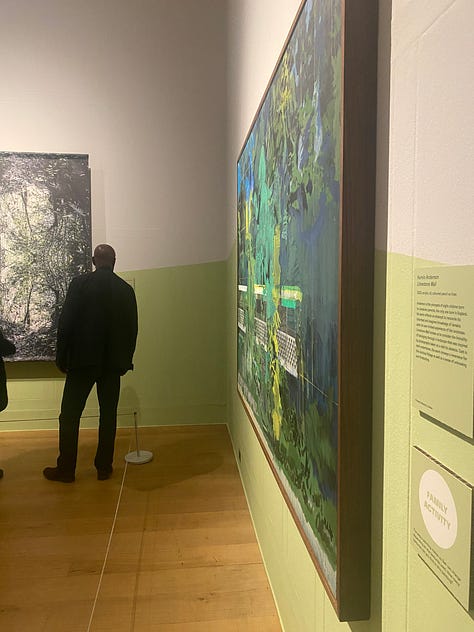
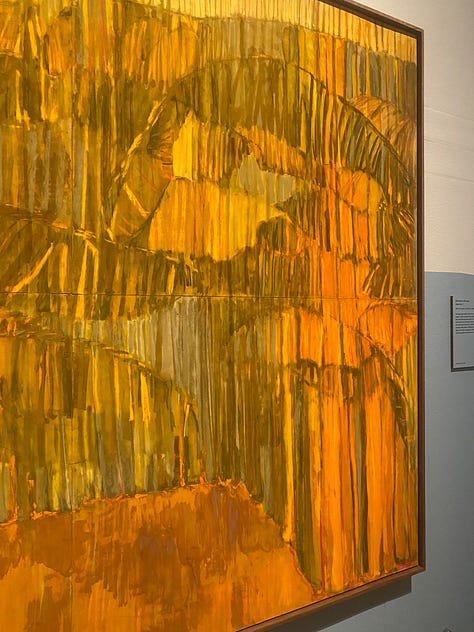
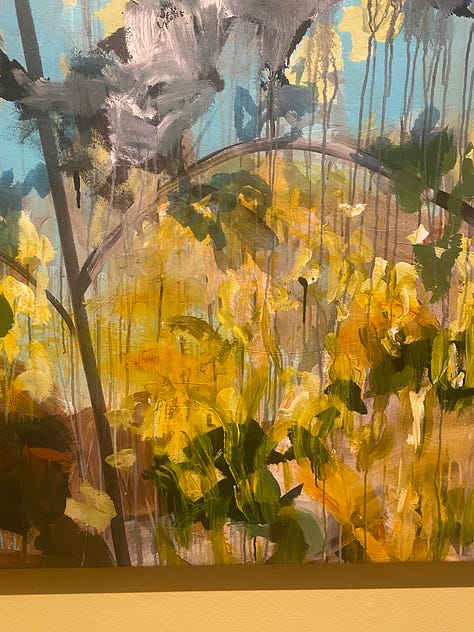
As you probably know, landscape art is my thing, so I was excited for this one. And there was no shortage of beautiful landscape paintings. Not just paintings, but I was drawn to the paintings the most. It was easy to get lost in a lot of them.
My favourite work from the exhibition was this:
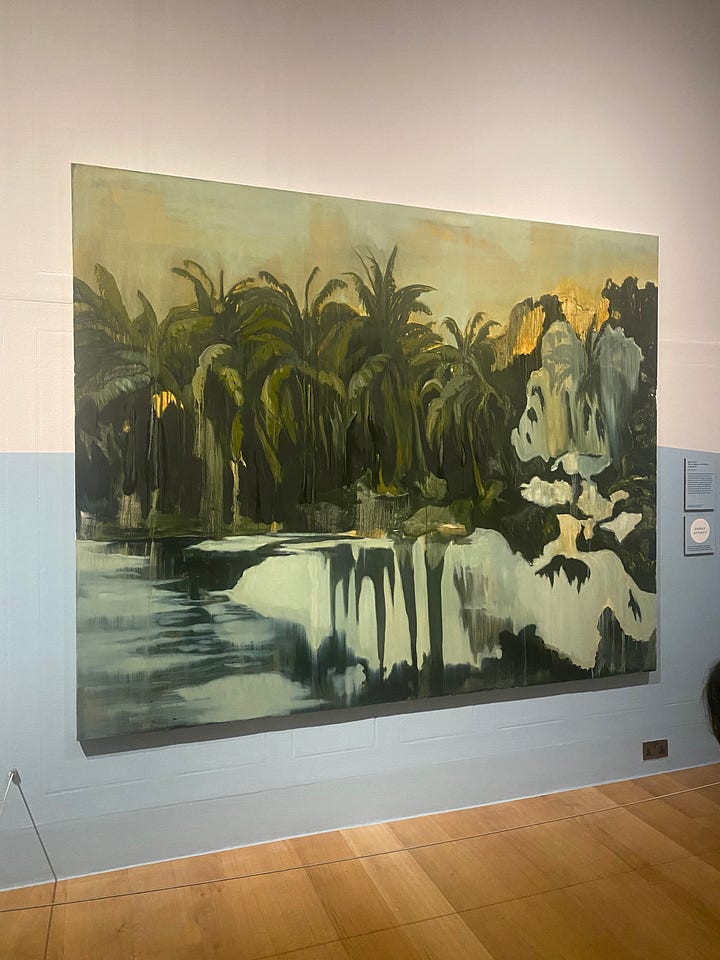
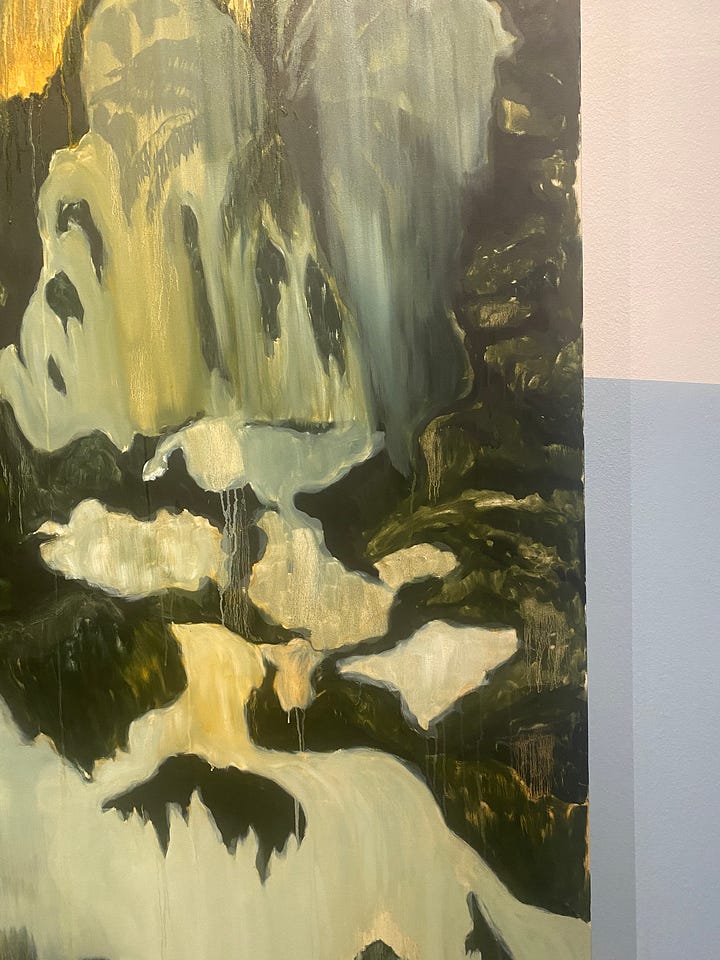
Not only are the colours exactly the type to draw me in, the fluidity and darkness felt personal. It looks like the feeling of being alone in nature, watching and being watched.
2. Women in Revolt
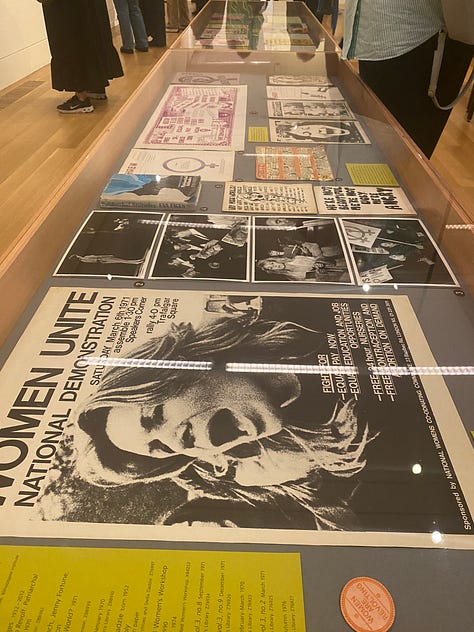
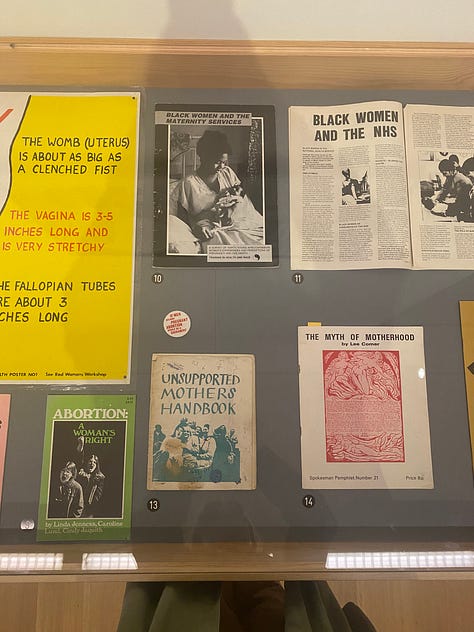
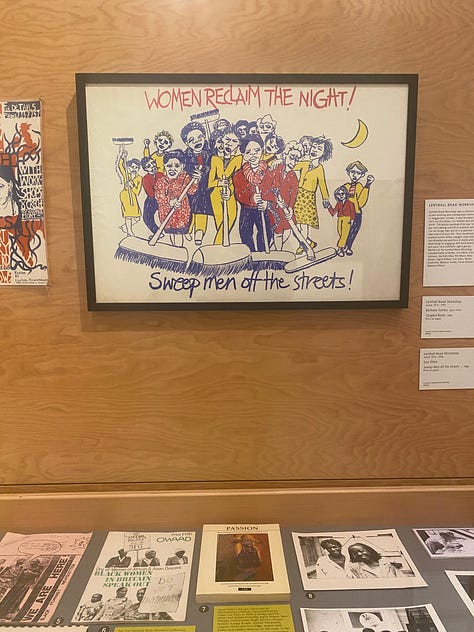
This was a very emotional one. Overstimulating in the amount of imagery crammed into each room. Busy with people and art; only adding to the overwhelm.
It’s one of those exhibitions that leaves you feeling angry in all the right places, upset in all the important ways. It left me with some really deep questions that I will definitely keep coming back to, that I already buried, and I will write more about those another time.
Questions of hierarchy, systemic racism and homophobia, oppression, sexism, discrimination, patriarchy, ableism and intersectionality. Yet you feel proud of all the work that has been done. The progress that has been fought for. The progress that people have died for. Willingly or unwillingly.
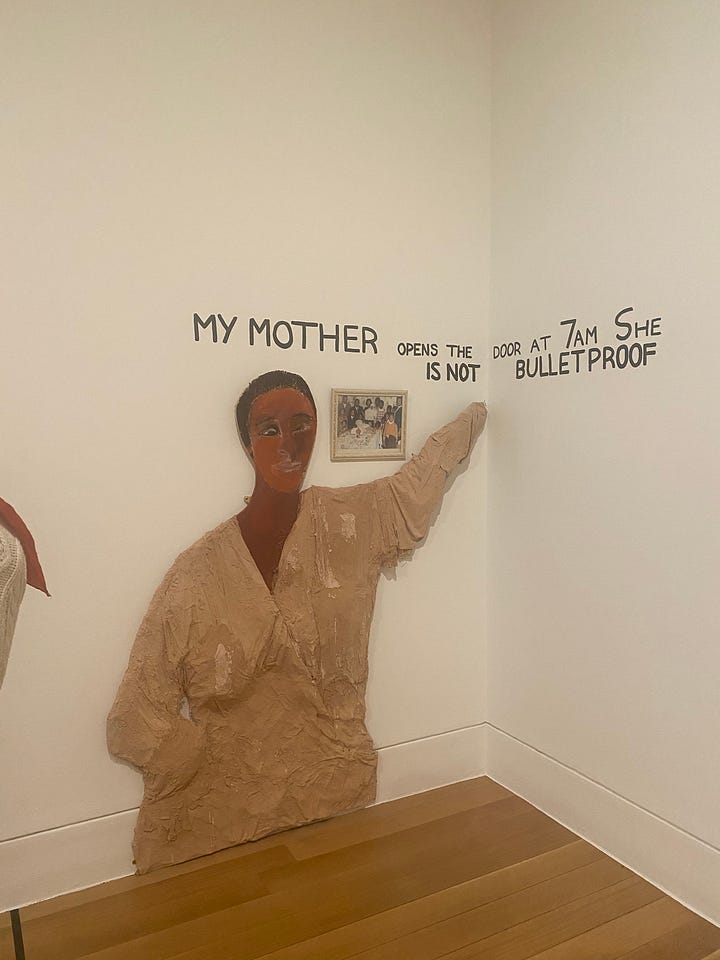

It’s the sort of exhibition you could revisit multiple times. I ended up buying the exhibition book, which I rarely do, because I knew it had themes and artworks I wanted to ponder on more, and when alone. It’s the best exhibition I’ve seen in a long time.
3. Unravel
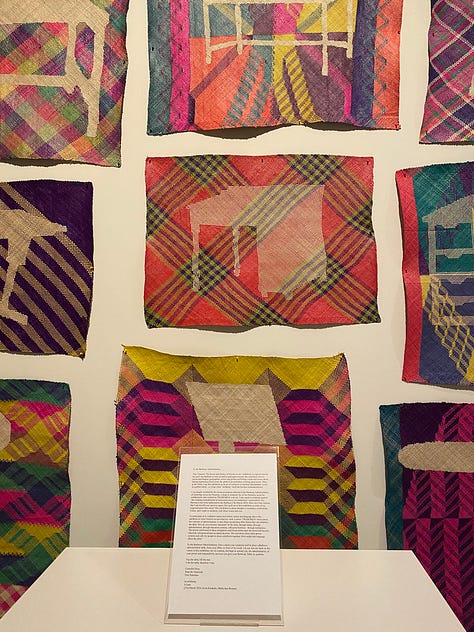
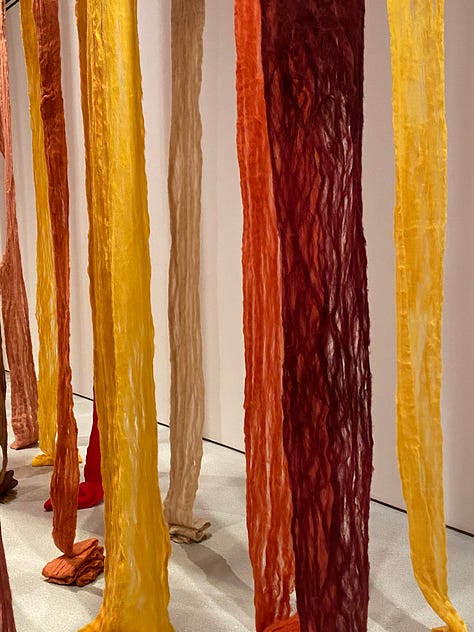
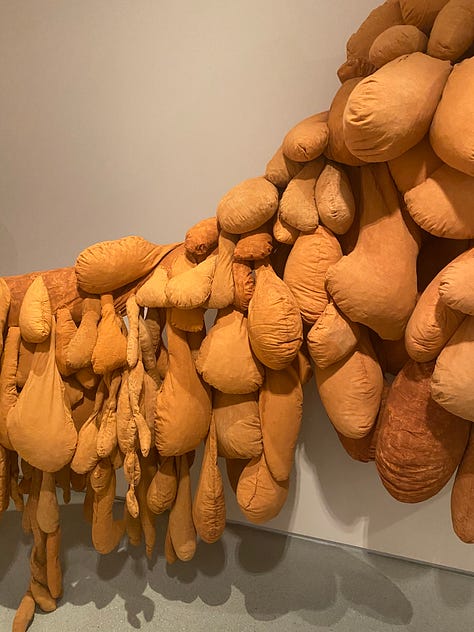
Cecilia Vicuña’s Quipu Austral was so magical to observe. The hanging fabrics moved delicately and gave me the impression of being under swaying branches. In fact the work is intended to represent water. There was also sounds of the artist recounting poetry (according to the description, not that I heard that.) ‘Quipi’ means ‘knot’ in the Quechua language and is a type of communication system using knots. I’ve learnt about this writing before and found it beautiful. This form of communication was banned and ordered to be destroyed following the Spanish conquest.
This work by Tracey Emin is emotional, powerful, full of honesty and raw feelings.
Igshaan Adam’s captured me the most with this dreamy installation. The intricacy meant you could stare for hours. It felt like being in a cloud. The pathways in the beading can represent desire paths- something I’ve always loved the existence of. Desire lines are those pathways you see, human made, through vegetation. May be a shortcut to skip out a corner or the most convenient route to the shop. Such a fascinating monument to human desire and time.
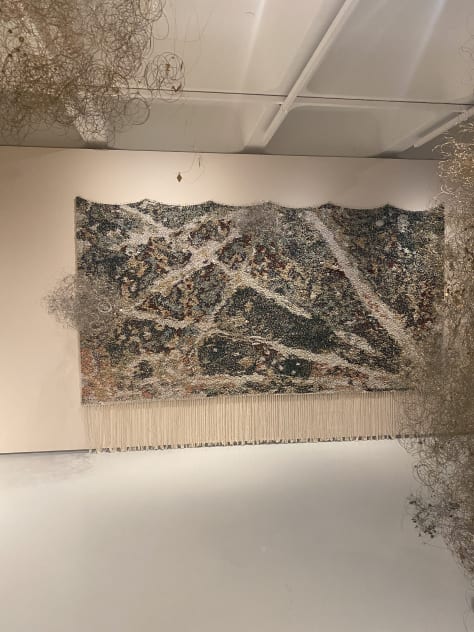
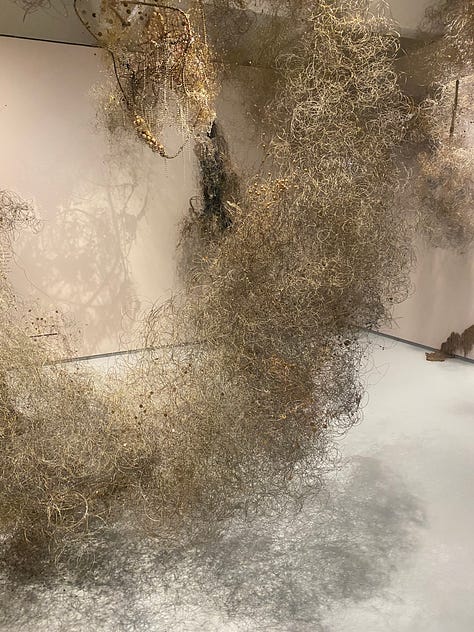
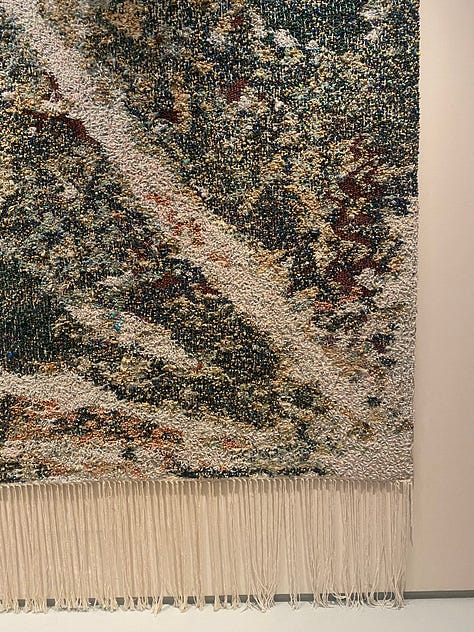
It’s important to note some works were removed due to the Barbican’s decision to not host the London Review of Books Winter series. I had no idea about this before I visited. The decision seems largely based on Pankaj Mishra's proposed lecture – titled ‘The Shoah after Gaza’. Artists who pulled their works had a space in the exhibition displayed with their letter or statement regarding this. Some artists chose to address the decision as a part of their artwork, for example Yee I-Lann instructed curators to display a letter infront of her artwork.
Thought provoking, moving, and visually stunning. It’s really lovely to be inspired by a medium of art very different from the one you make.





